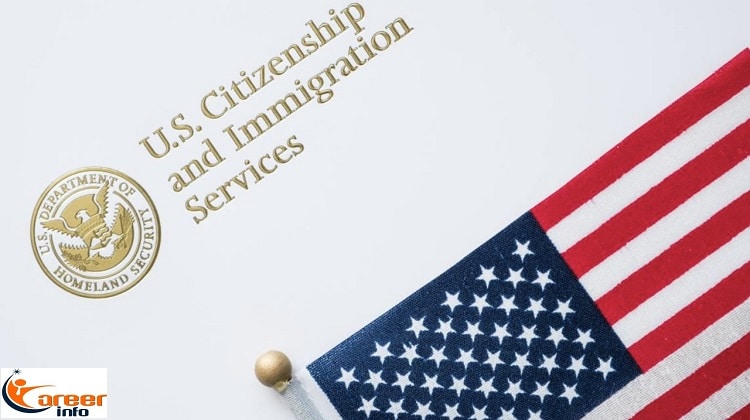United States (USA) Work Visas
Types Of United States (USA) Work Visas
United States (USA) Work Visas is mostly sought by intending immigrants or travelers bound for the USA. This is so because a large number of foreign nationals want to work in the United States. Even though most jobs in the United States begin as temporary, work in the United States may frequently lead to a green card (U.S. permanent residency).
This page includes brief descriptions of some of the most often acquired United States (USA) Work Visas in order to assist readers choose which visa they may be eligible for. We’ll go through both immigrant and non-immigrant visas that are available to immigrants in the United States of America. Learn how to get a green card to work in the United States.
United States (USA) Work Visas

Types of United States (USA) Work Visas
United States Work Visas |
|
| Non-Immigrant Visas | Immigrant Visas |
| H-1B Visa | EB-1 Extraordinary Ability |
| L-1 Visa | EB-1 Multinational Executive |
| O-1 Visa | EB-2 Advanced Degree |
| E-1 Visa | |
| TN Visa | |
Please keep in mind that the list below is not complete, and that there are other work visas as well as other sorts of visas (such as student or tourist) that will allow you to migrate/visit the United States. You may want to explore guidelines for working in the USA.
Non-immigrant Visas
If you enter the United States with a non-immigrant visa, you must leave by the date your visa expires, unless you request to renew your visa. The temporary work visas listed below will allow you to work in the United States for a specified employer.
United States (USA) Non-Immigrant Visas |
| H-1B Visa |
| L-1 Visa |
| O-1 Visa |
| E-1 Visa |
| TN Visa |
H-1B Visa
The H-1B visa is a well-known non-immigrant visa. In reality, there are more individuals who want them than there are available, owing to annual supply restrictions in most cases.
How To Obtain The H-1B Visa
To acquire an H-1B visa, you must;
- Have a job offer from a company in the United States.
- Your planned employment position must be in a specialized occupation, which generally necessitates a bachelor’s degree or higher.
- Be sponsored by an employer in the United States for the H-1B visa by filing an I-129 petition with US Citizenship and Immigration Services (USCIS).
- Consult an attorney because this sort of visa is in great demand.
L-1 Visa
The L-1 non-immigrant visa is intended for workers of a foreign firm that is a subsidiary of a U.S. company. Employees with L-1 visas are moved from a foreign corporate branch to a branch in the United States. Alternatively, the foreign firm might relocate the L-1 employee to the United States in order to create a U.S. office.
In any case, the L-1 employee must have worked for the foreign affiliate for at least one year in the past three years before entrance into the United States.
Furthermore, the L-1 visa is separated into two categories: L-1A (managerial/executive capacity) and L-1B (specialized knowledge).
O-1 Visa
The O-1 non-immigrant visa is intended for foreigners of exceptional ability who are migrating to the United States to work in their field of expertise. To acquire an O-1 visa, you must receive a job offer from a U.S. company and demonstrate that you are exceptional in your expertise.
How To Obtain An O-1 Visa
- You must fulfill three of six criteria to demonstrate your exceptionality. Earning a high income (salaries and benefits), producing original contributions to your profession, getting accomplishments/awards, and performing in a critical role in your expertise.
- The U.S. firm submits an I-129 petition in your name, which must also contain a statement from the labor union in your industry indicating that the union has no objections to your prospective U.S. employment.
E-1 Visa
The E-1 non – immigrant visa permits nationals of specified countries to enter the United States to engage in commercial activities.
How To Obtain An E-1 Visa
- You can apply for the E-1 visa as either a Treaty Trader or a Treaty Investor.
- Be a national of a country that has a trade treaty with the United States, and
- You must demonstrate that you are going to the United States to conduct meaningful trade under that treaty.
- In addition, if you wish to come as a Treaty Investor, you must spend a significant amount of money in a US firm and demonstrate that you are going to the US to develop that investment.
- Typically, you apply for an E-1 visa at the US embassy in your native country, and no paperwork are filed with USCIS.
TN Visa
NAFTA established the TN visa (the North American Free Trade Agreement). Only Canadian and Mexican nationals are permitted to enter the United States to work for a U.S. company under the TN visa.
How To Obtain a TN Visa
To be eligible for a TN visa, you must demonstrate that;
- You are a Canadian or Mexican citizen,
- Have a work offer from a U.S. company,
- Your employment qualifies for the TN visa under NAFTA. You belong to either an accountant, engineer, attorney, pharmacist, scientist, or a teacher
Immigrant Visas
If you enter the United States on an immigrant visa, you will be granted permanent residency upon entrance and your real green card shortly thereafter.
The following are immigrant work visas that will allow you to work and reside permanently in the United States. You may also be able to apply for these categories while still in the United States. In which case you would convert your status to permanent resident without leaving the country (United States).
Immigrant Visas |
| EB-1 Extraordinary Ability |
| EB-1 Multinational Executive |
| EB-2 Advanced Degree |
EB-1 Extraordinary Ability
The extraordinary ability visa is part of the employment-based first preference immigrant category (EB-1). Few foreigners are eligible for extraordinary ability visas because you must demonstrate that you are at the pinnacle of your profession and have maintained worldwide or national reputation in your specialty.
To do so, you must fulfill three of 10 criteria demonstrating exceptional talent. Publication of scholarly articles, publications your work, accolades, critical role for a top company, membership in professional associations, authentic contributions, high pay and benefits, exhibitions of your work, critiquing of others’ work, and commercial success in the performing arts are examples of these.
EB-1 Multinational Executive
This multinational executive visa is also part of the employment-based first preference immigrant category (EB-1) and functions similarly to the L-1 non-immigrant visa.
How To Apply For EB-1 Multinational Executive
To qualify as a multinational executive, you must fulfill the same requirements as for the L-1A visa (prior employment for the foreign affiliate in the previous three years and that you would work in a managerial/executive position).
EB-2 Advanced Degree
This advanced degree category is a second preference immigrant category. To qualify, you must be sponsored by an U.S. firm.
How To Obtain An EB-2 Advanced Degree Visa
Your employer must go through the PERM certification procedure. You must have at least a U.S. Master’s degree (or international equivalent) and show that your offered employment position needs at least a U.S. master’s degree.
If you do not have a master’s degree, you may be eligible for EB-2 if you have a bachelor’s degree and five years of progressive experience. You may also want to explore work in Canada.
In order not to miss out on prompt updates from careerinfos.com, enter your email address below and hit the subscribe button beneath.
A confirmation link will be sent to your inbox or check your spam mails if its not in your inbox. Make sure you click the link to confirm your subscription in order not to miss any updates from this blog. All comments (related to the post above) should be dropped via the comment section below.






